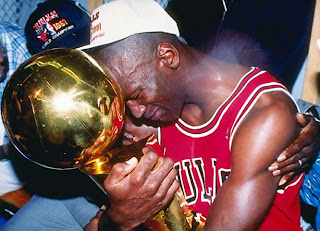Hollywood couldn’t have written it any better.
Had the folks at Warner Bros or Twentieth Century Fox gotten a hold of this script, they would’ve thrown it into the garbage right away. After all, no one likes watching a movie where the plot is so unrealistic and unlikely that only a wide eyed young dreamer could’ve possibly thought it up.
Well, it looks like the dreamers finally got their way. After sneaking into the playoffs on the last day of the regular season, the Cardinals fought off elimination not once, but twice in game 6 of the World Series.
On two separate occasions, the Cardinals found themselves with their backs against the wall, two strikes and two outs in their final inning, with their fans at Busch Stadium holding their collective breath. Both times however, the Cardinals hitters delivered, and those held breaths turned into wild cheers.
Whether it was David Freese hitting a game tying, two run triple off the right field wall in the bottom of the ninth inning or Lance Berkman smacking a two out single to tie the game one inning later, the Cardinals showed no quit.
After Freese’s game saving triple, the Texas came right back in the next inning, as Josh Hamilton hit a monster two run home run to give the Rangers the lead once again. As the bottom of the tenth inning began, Texas was once again ready to pop the champagne (or ginger ale, for the sake of Hamilton, a recovering alcoholic). The Rangers seemed poised to take home their first championship in their 40 year history, but alas, that wasn’t the case. The Cardinals weren’t done writing their Cinderella story just yet.
St Louis got a few runners on base to start off the next inning, and before anyone knew it, we were in the same position as the previous inning. Two outs, two strikes, and the Cardinals’ season hanging in the balance. It couldn’t happen again, could it?
It could. Lance Berkman, the 35 year old, supposedly washed up baseball outcast, laced a two strike single up the middle, and the Cardinals were tied yet again. They had done the unthinkable; twice.
In the next inning, the Rangers laid a big ol’ goose egg on the scoreboard, and once that happened, everyone watching the game, whether in attendance or at home in front of their televisions, knew it was over.
David Freese strolled up to the plate yet again, this time in the bottom of the 11th inning of what would become one of the all time greatest baseball games in the history of the sport, and it happened. With the count full, Rangers pitcher Mark Lowe threw a fastball right up the middle of the plate, and Freese connected. Right off the bat, everybody knew; the ball went sailing into the St Louis sky, landed beyond the fence in centerfield, and the stadium exploded. Game over, Cardinals win.
This was only game 6 though; the Cardinals still had to win the seventh game of the series to win the title. But, after a comeback win like that and the collapse of the Rangers in game 6, the result of game 7 was inevitable. The Cardinals won easily, 6-2, and became the World Series champions.
Roll credits, cue the curtains, the movie has a happy ending.
Oh, by the way, there’s something you should know about David Freese. For those who have already forgotten, he is the man who hit the season saving 9th inning triple and the game winning 11th inning homerun for the Cardinals. He was born and raised in St Louis, a diehard Cardinals fan as a kid. Now how’s that for an unbelievable story, and a true one at that.


